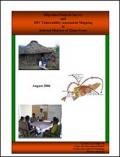Publications - Released in 2006
Around the world, research and experience have shown that migration and mobility increases vulnerability to engaging in HIV-risk behaviour. In the case of Timor-Leste, mobility is particularly relevant due to massive population movements in recent years associated with the post-referendum conflict. During the violence of 1999, it is estimated that approximately 250,000 people, or one quarter of the population, fled to neighbouring West Timor. Since the cessation of violence, nearly 200,000 Timorese have returned to their villages and communities. However, endemic poverty and lack of opportunities in rural areas continue to contribute to rural-urban migration movement and mobility.
The overall aim of this study was to provide baseline data on mobility patterns, HIV/AIDS awareness and vulnerability in Timor-Leste and comprised of two parts - the Migration Patterns Survey and Vulnerability Assessment Mapping.






